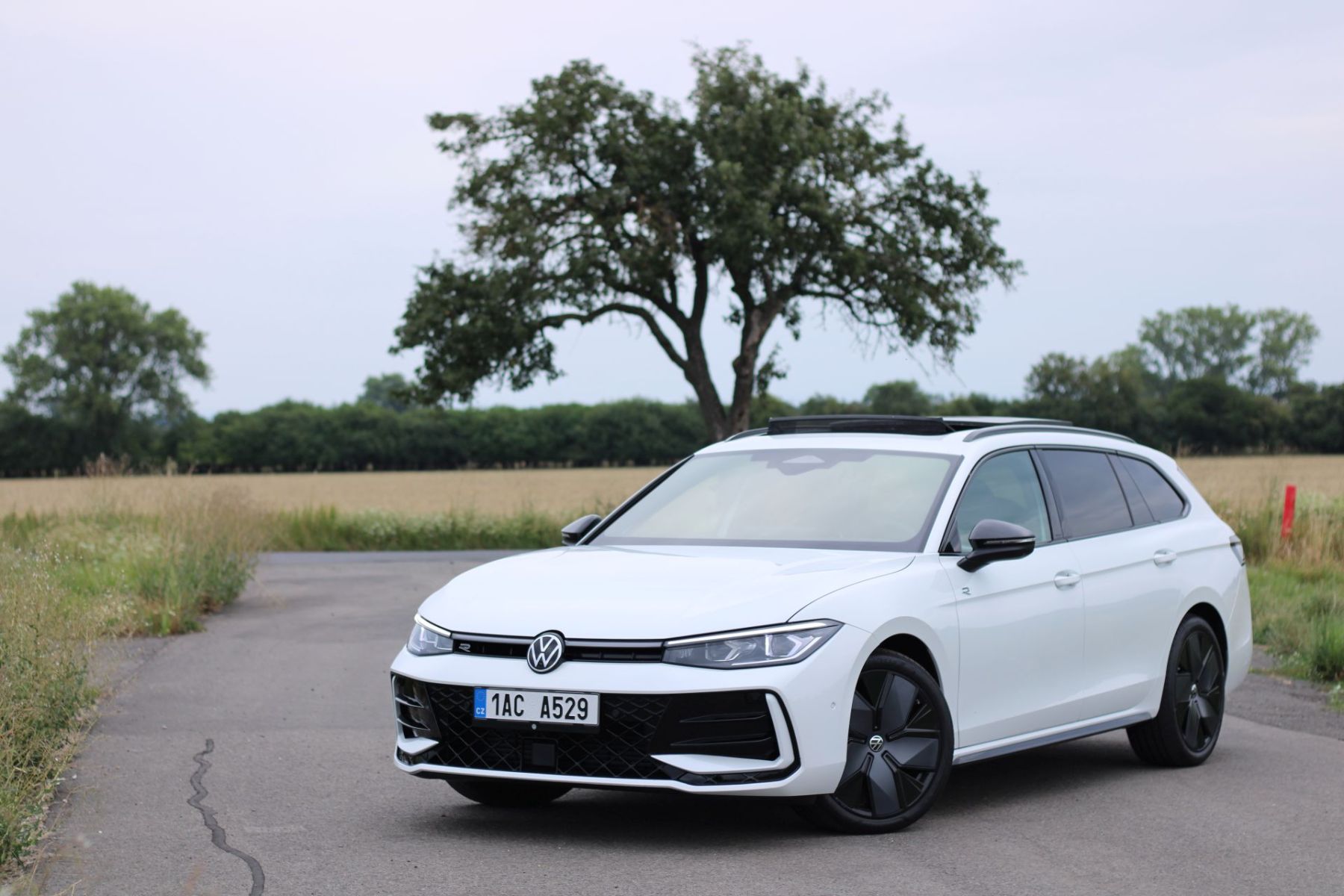Drivin' in Czechia
All you need to drive smart in the Czech Republic
Drivin' in Czechia
All you need to drive smart in the Czech Republic

Mid-size segment on the European market is one of those strongly shaped by the rise of SUVs. Interest in the class has gradually declined, leading many brands to leave it behind. The same threat loomed over an icon such as the Volkswagen Passat, which had long been a class hegemon. In the end, though, the new B9-generation Passat arrived in a conventional guise, albeit for Europe exclusively as a station wagon. I spent a week with the most typical version, powered by the 2.0 TDI turbodiesel, to find out how successful it is. So what is the new VW Passat (B9) like?
Market trends hit the Passat too, so the new generation debuts in Europe solely as an estate; the saloon is gone. Another change is the noticeable growth in dimensions. The latest Passat Variant stretched to 4,917 mm, 144 mm more than before, while the wheel-base grew by 50 mm to 2,841 mm—moves meant to free up cabin space.
The styling echoes today’s Volkswagens, especially the electric ID family. Up front it stays conservative; to my eyes the nose looks almost plain, even on the sport-flavoured R-Line with its bespoke bumper and 19-inch wheels. It is essentially a supersized Golf.
It’s a different story at the rear. Here, designers gave it just the right flair: the full-width tail-lights make this estate decidedly handsome. Nicely done!
Volkswagen cabins have always excelled in intuitive controls—you just sat down and instinctively knew what to press. Lately that is no longer true, and the new Passat proves it. The start button has moved to the centre tunnel, the shifter to a right-hand stalk, while the climate is handled via the touchscreen and a capacitive strip below. Long-time VW owners may be surprised, yet in practice it quickly becomes second nature.
The 15-inch infotainment display resembles a television. Large touch areas make it easy to use on the move, although extended operation locks the screen for safety until you refocus on traffic. The UI is clear, fast and good-looking; camera views and instrument themes are first-rate, though the touch strip offers no palm rest.
Drivers enjoy a slightly elevated but natural position and, above all, fitted with top ergoActive sport seats whose ten pneumatic bladders deliver massages with adjustable modes, strength and duration.
Quality of workmanship and materials is superb; Alcantara dash trim and unusual ambient lighting across the passenger side stand out. Thanks to the larger body, rear passengers have a heap of space both for knees and heads. The boot officially holds 690 litres, forty more than before. Clever touches—flip-up bag hooks, 12-/230-V sockets, a partition, bins over the arches—make daily life easier, while the electric roller blind lifts automatically with the tailgate.
The B9 Passat was launched only with combustion engines; fully electric duties fall to the ID.7. Czech buyers first saw a 1.5 eTSI mild-hybrid and a 2.0 TDI. Although a plug-in hybrid and stronger units joined later, the 110 kW 2.0 TDI remains the mainstream pick—and the engine I tested.
On the road the diesel proves the optimal choice. Performance is solid; you are not a rolling roadblock even on motorways. Frequent German trips might justify the stronger tune, because beyond 130 km/h the power plateau shows. Torque swells from 1,800 rpm in typical diesel fashion.
Matched to a seven-speed DSG, the engine stays in its sweet spot and shifts swiftly. Throttle response is quick, though urban driving sometimes exposes a brief turbo lag; paddle requests could be crisper. Fuel thirst hovers around 6 l/100 km in town, just over 5 on the motorway, and only high-speed blasts exceed 8. With a 66-litre tank, 1,000 km between fills is easy.
The new VW Passat also delights with its driving dynamics. The suspension is compliant and smooth under normal conditions, with no clunky impacts from the wheels, despite the test car riding on 19-inch wheels. At the same time, it remains confident and highly predictable when pushed, supported by well-tuned electronic assistents. I was honestly surprised by how well the Passat handles faster driving and how unexpectedly communicative the steering feels.
Comfort is further enhanced by excellent noise insulation. At motorway speeds you barely hear the engine or ambient sounds. This makes cross-continental travel thoroughly enjoyable—especially thanks to those aforementioned comfortable seats.
Driver assistance systems meet the latest standards, and since the infotainment screen allows icon customization, you can easily deactivate features like the annoying overspeed chime.
High comfort
Energy-saving engine
Spacious interior
Boring design
Control requires a bit of practice

| Engine | 2.0 TDI |
|---|---|
| Year | 2024 |
| Displacement (cc) | 1968 |
| Power (kW) | 110 |
| Torque (Nm) | 360 |
| Transmission | 7 dual clutch |
| Top speed (km/h) | 223 |
| Acceleration 0-100 km/h (s) | 9,3 |
| Fuel economy (l/100 km) | 5,2 |
| CO2 (g/km) | 136 |
| Fuel tank capacity (l) | 66 |
| Curb weight/payload (kg) | 1777/463 |